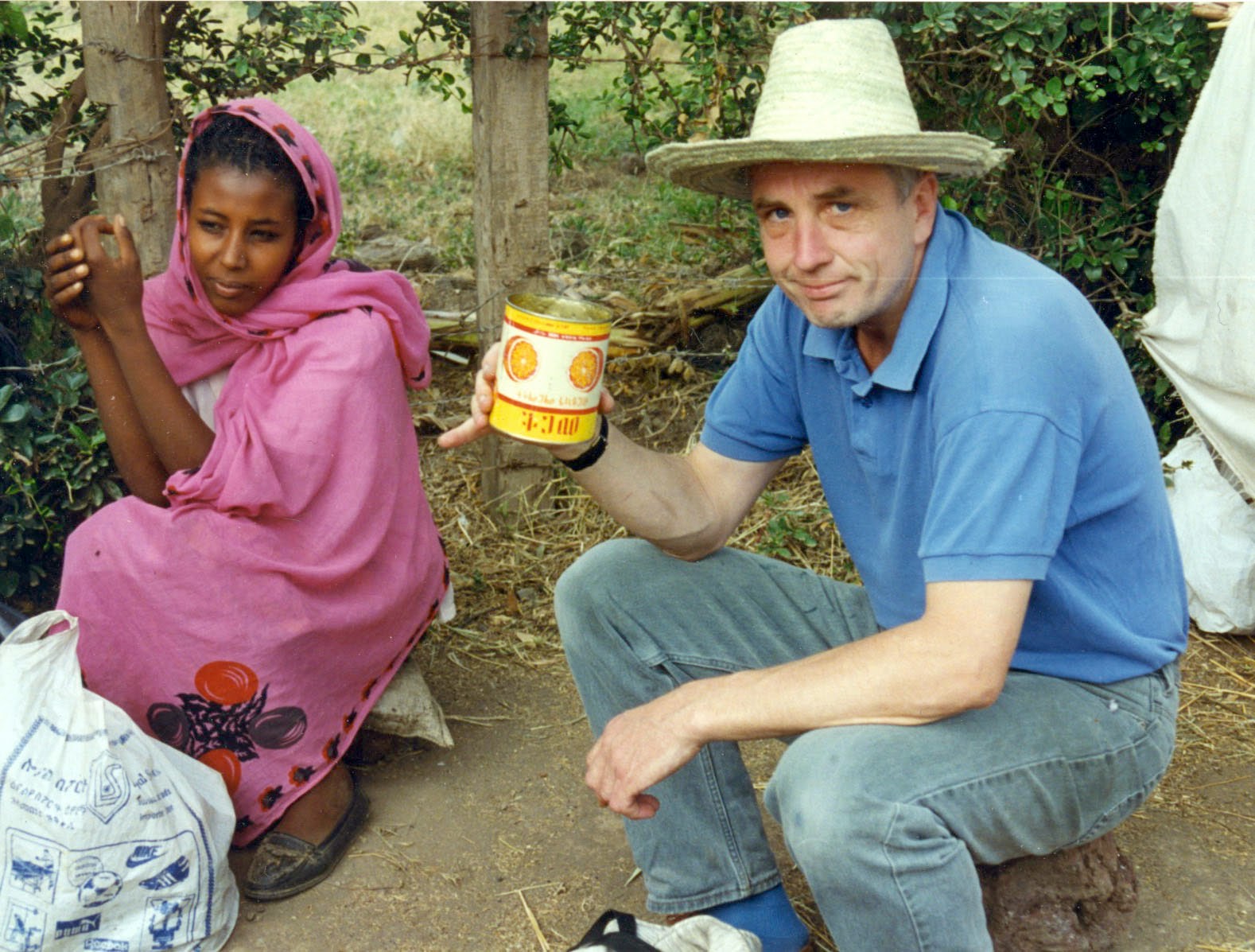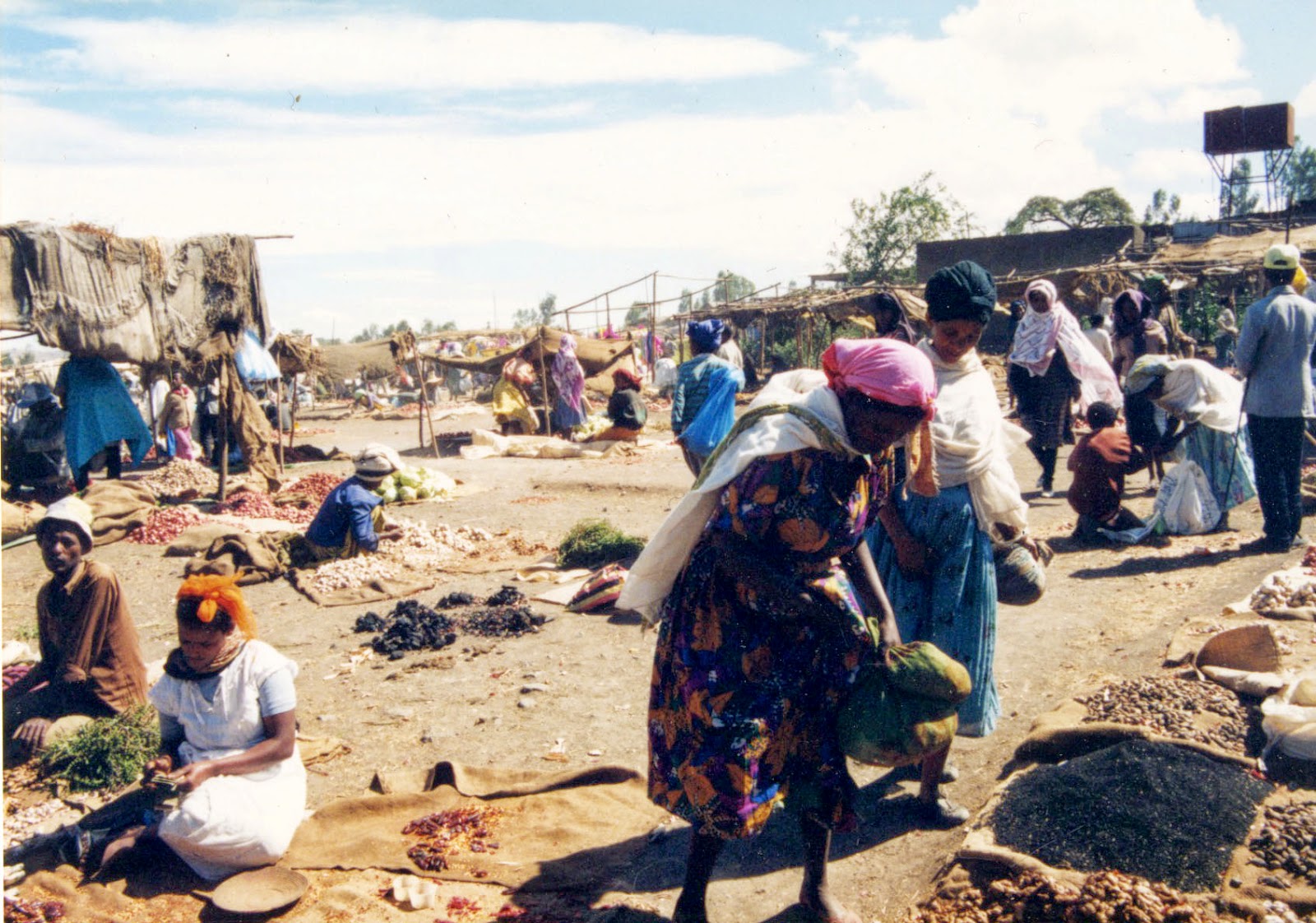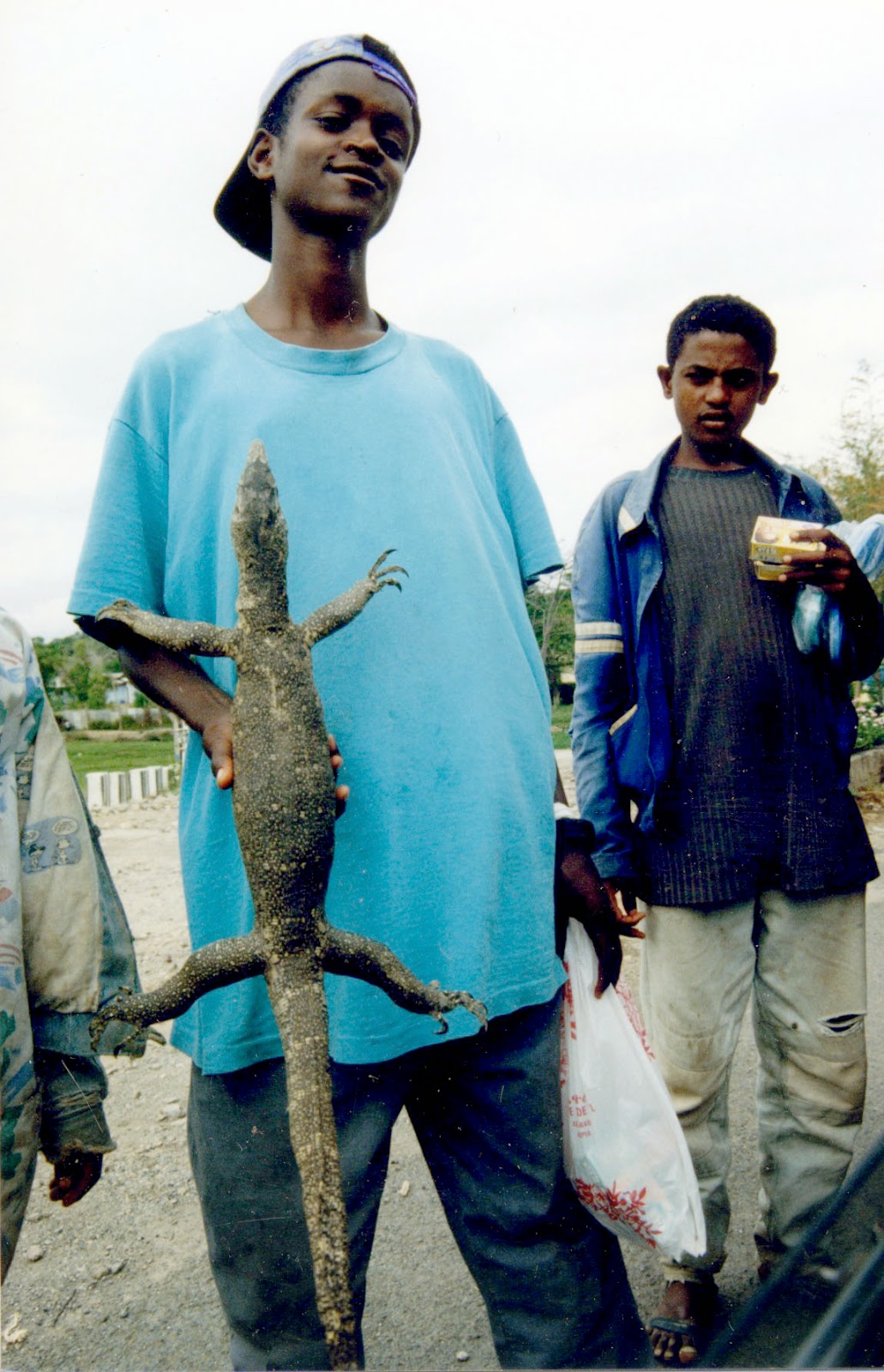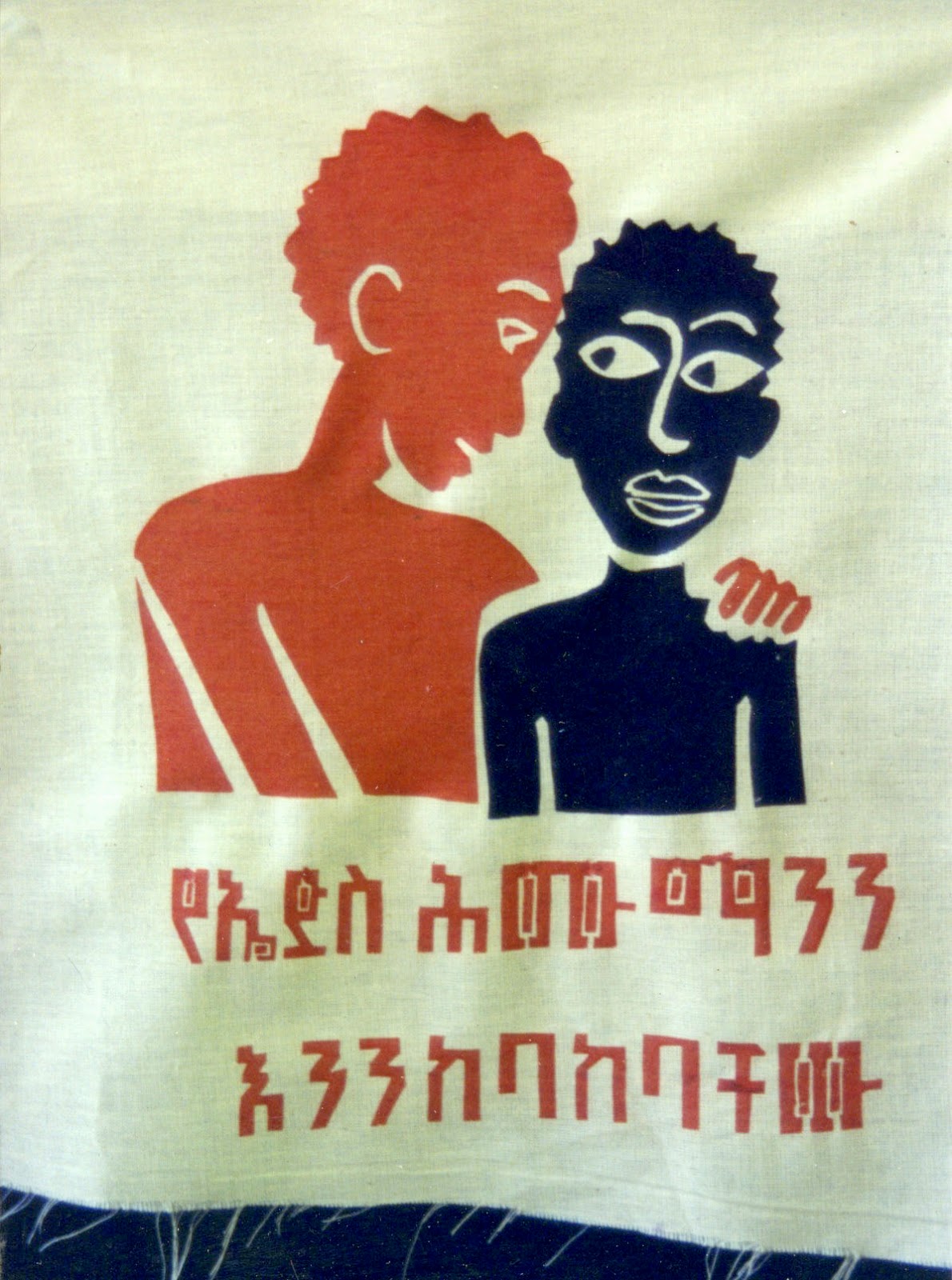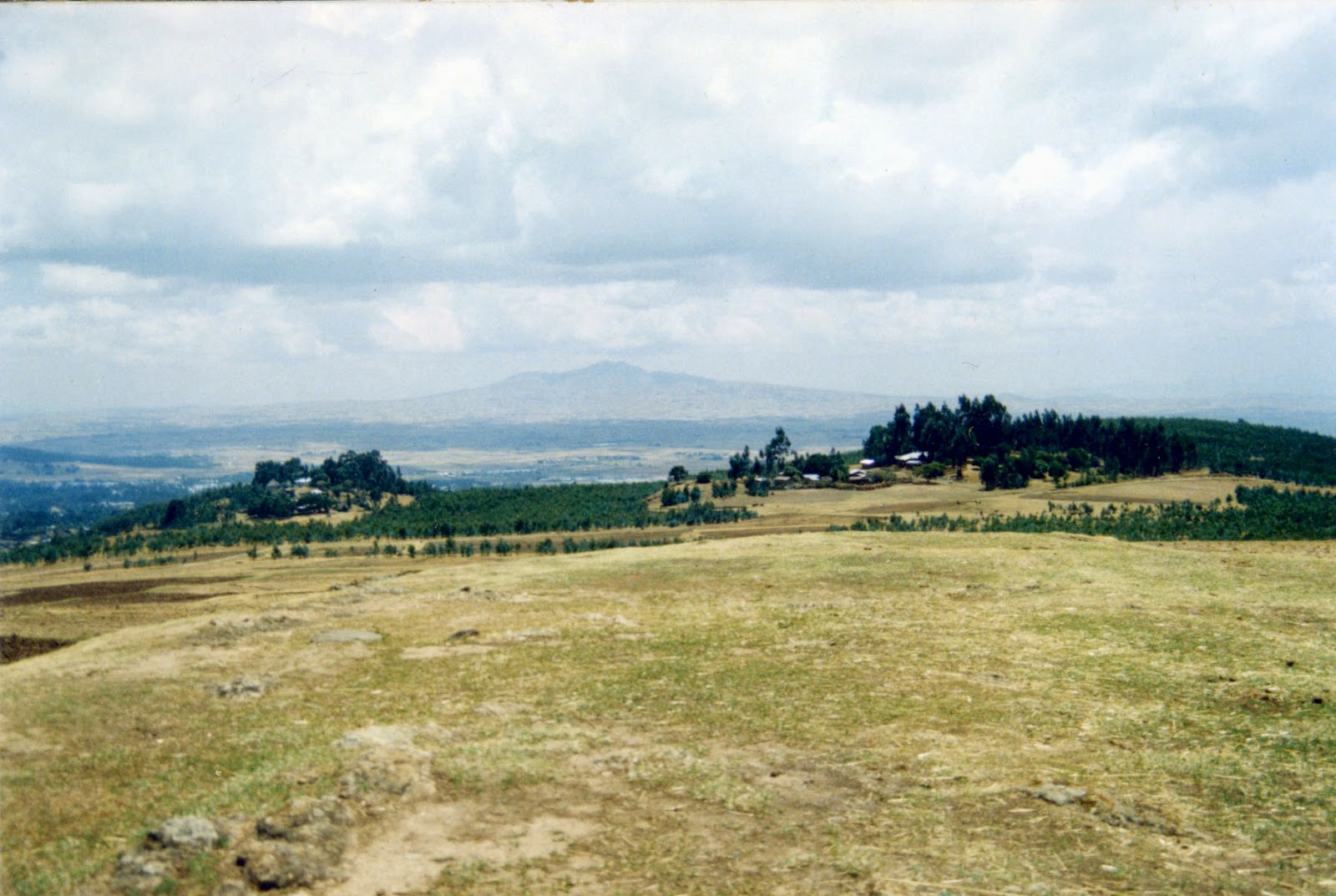Occasionally I stayed overnight with Yvette and Tim in their small, moderately grotty flat in one of the buildings along from Holborn tube station. Neither of them seemed keen on washing up. Great company, and I loved watching Tim jamming on his telecaster, often with bandmate Matt.
During this time Yvette was working at the Burma Action Group, now known as the Burma Campaign. She invited me to one of their events. This included a short film of Aung San Sui Kyi, made secretly by John Pilger, against the wishes of the Burmese State Law and Order Reconciliation Council (SLORC), and presented by him. I greatly admired Pilger’s work, having read a few of his very informative books about political issues around the world. So, it was nice to chat with him briefly and good, too, to meet the other guest, Glynis Kinnock.
Not long after this, Yvette got a job with a small NGO based at the University of Chiang Mai, in northern Thailand. Their acronym, WEAVE, stood for Womens’ Education for Advancement and Empowerment. Yvette had the task of running a health education course for students from the Karen hill tribe, over the border in Burma, or Kawthoolei, as the Karen call their homeland. As part of her curriculum, Yvette had the idea of inviting Health Images to run a visual communication training workshop, scheduled for April 1993.
I had been busy with work in the first few months of 1993 - a booklet for the UK Department of Health on the subject of the UN Rights of the Child; a record cover for The Beloved’s song ‘Outer Space Girl’; a cover for an album of Columbian music, ‘Cumbia Cumbia’, for World Circuit; a leaflet for the Suffolk Rural Arts Fund; and three posters for the Asian Music Circuit’s Festival of Plucked Instruments.
A Bit of History
(Note: readers with short little spans of attention may want to skip this bit and go back to reading Proust...)
The first Anglo-Burmese war took place between 1824 and 1826. It has been described as a war between rockets and steamships on one side, with elephants and muskets on the other. The British won and established a presence in Rangoon.
The second Anglo-Burmese war happened 60 years later, in 1885. Troops fighting on the British side were called the Burma Field Force (BFF)., under the command of the delightfully named General Sir Harry North Dalrymple Prendergast. The BFF included brigades from Madras and Bengal.
The Burmese king Thibaw was on his throne in Ava, near Mandalay, as the BFF advanced from Rangoon to overthrow him. This was Kipling’s ‘On the Road to Mandalay’. A few days after his defeat, Thibaw’s pet white elephant died. It had been a symbol of Burma’s sovereignty but was now unceremoniously dragged out of the palace gates, to the consternation of the Burmese people. Thant
Myint-U, in his book ‘River of Lost Footsteps’, says that “dragging the king’s own corpse along the street would probably not have evoked greater ill-feeling”.
Myint-U, in his book ‘River of Lost Footsteps’, says that “dragging the king’s own corpse along the street would probably not have evoked greater ill-feeling”.
The 1890s and early years of the twentieth century were relatively peaceful and prosperous for Burma. The ruling British improved the country’s infrastructure (railways and schools) and the productivity of its agricultural sector. In fact, during this period, Burma became the biggest exporter of rice in the world. (Unfortunately, by 1962 it had become a net importer of rice).
During World War Two, Burma was invaded by Japanese forces. The Japanese worked their harsh way up through Burma, towards the border with India. They wanted to move into British India - Bangladesh was then a part of India. There were prolonged battles along the Burma-India border, the decisive ones taking place in and around the towns of Imphal, in the Indian state of Manipur, and Kohima in the state of Nagaland. The Chindits, under Orde Wingate, played an important part in fighting off the Japanese, as, of course, did General Slim and his men. The Japanese were defeated but not until 80,000 Japanese and 17,000 Allied troops had been killed in these jungly battles. It must have been hell...
Hiroshima was bombed on August 6, 1945, while in Burma the fighter and politician Aung San began the struggle for independence from Britain. Some of the Burmese hill-tribes in the east of the country didn’t want to be part of Aung San’s plans. Among these were the Karen people who, initially, wanted a separate Karen state within the British Empire. Aung San, who is considered ‘Father of the Nation’ in Burma, played a major role in kicking the British out, thereby gaining the country’s independence. Despite the great work he had done, Aung San was assassinated in 1947, not long before independence was formally achieved in January 1948. Some say that this was done by the British but most think that U Saw, Aung San’s political rival, was responsible.
Later in 1948, U Nu took over as prime minister, becoming the first and last democratically elected leader of Burma. Soon, however, civil war broke out. It was to be the longest running armed conflict in the world! On Christmas Eve Burmese government troops killed Karen people in eight churches around the country, while, in one village not far from Rangoon, 150 Karens were murdered. The Karen National Defence Organisation (KNDO) fought back. At the end of January 1949, fighting broke out on the outskirts of Rangoon. General Smith Dun, a Karen, was replaced as head of the Burmese army by General Ne Win. Further fighting took place on the outskirts of the capital and soon there were mass demonstrations calling for the removal of U Nu.
By 1950, the civil war had calmed down but the country was in a bad way, verging on the anarchic. The Chinese had invaded eastern Burma - these were the remnants of the Chinese Nationalist army, the Kuomintang (KMT), led by Chiang Kai-shek, which had been defeated by Mao’s Red Army in 1949. By 1953, the KMT actually occupied large areas east of the Salween river. At the same time, Ne Win and his military colleagues had built up a power base, initially to resist Chinese efforts to take over more Burmese territory. In 1954, the Burmese fought successfully against the KMT, and also launched an offensive against the KNDO soldiers who had
retreated into the hills nearer the border with Thailand. After several groups of communist rebels ( and, in Arakan, Islamic insurgents) surrendered, U Nu declared that the civil war was just about over.
In 1958, U Nu invited Ne Win to take over as head of an ‘interim’ government. This basically meant that the military had gained control of the country. Not good. Two years later, the caretaker government held elections. U Nu won by a landslide, so Ne Win had to hand back political control. By 1962, the military were, once again, back in power, after a more or less bloodless coup. Ne Win formed a political party called ‘The Burma Socialist Programme’ which was, (surprise, surprise), closely allied to the military. Fourteen years of a kind of democracy had come to an end.
The ‘Burmese Way to Socialism’ led to a long period of isolation from much of the rest of the world. At one time, in the early 1960s, visas for foreign visitors only lasted for 24 hours. Dancing, horseracing, nightclubs and beauty contests were all banned. Any dissent was immediately stamped on and U Nu was put into prison. In 1964 and following, about 100,000 Indian nationals were expelled from Burma while in 1966 U Nu was released from prison.
By 1968 a Chinese-backed insurgency had built up along the Burma-China border. Ne Win reinforced the local militia in the border area and also resumed his support for the opium warlords in that area, who included the notorious Khun Sa. The Golden Triangle - whose product has ruined many lives.
Also in 1968, U Nu was allowed to leave Burma, going into exile in London,where he began to try to establish an army opposed to Ne Win. Despite good communications between Burmese exiles and rebel Karen and Mon (another hill tribe) armies, U Nu’s efforts did not achieve much and the civil war rumbled on again.
During the 1970s, the alleged fight against drugs was, apparently, little more than an excuse to attack rebel groups. The opium trade flourished. When they fought against the Karen and other insurgents, the Burmese army sometimes used anti-aircraft guns. They were not fired against planes (the rebels didn’t have any) but were fired along the ground in the jungle to zap the rebels.
In 1974, a new constitution for Burma was written. It said that the Burmese Socialist Programme Party was to be the only legal political party. The civil war continued. The Karen and other hill tribe people suffered great brutality. In the same year, U Thant, Secretary General of the United Nations from 1961 - 1971, died in New York. He was probably the best known Burman in the outside world and much admired by the Burmese people. Ne Win had never got on with U Thant - indeed, the regime was generally hostile towards educated people. U Thant’s body was flown back to Rangoon and his coffin taken to the racetrack so that people could pay their respects. Ne Win was not at all happy about this and claimed that U Thant’s family had broken the law by bringing the body back to Burma without official permission.
Crowds visited the racetrack and eventually permission was given for U Thant to be buried in a small, private cemetery. This was not acceptable to many Burmese people, though. They felt that U Thant should be buried in a more public place. A large gathering of students developed outside the cemetery, with thousands of onlookers. The students seized the coffin and drove it to Rangoon university, where political speeches were made. The campus filled up with thousands of people. In the end the government said that there could be a public funeral, but that there would be no state funeral. The day after this announcement, a second attempt was made to bury U Thant’s body. The burial was to take place at the famous Shwedagon Pagoda. Crowds lined the avenue leading up to the pagoda but the students insisted that he should be buried at the Students’ Union, on the campus. So, they seized the coffin again. After a few days, a large number of Ne Win’s riot police, along with a thousand or so soldiers, entered the university, where they killed dozens of students and arrested hundreds more. After all this, U Thant’s body, which must have been fairly warm by this time, was taken to its final resting place in the Cantonment Garden, near the Shwedagon Pagoda. He was buried at the third attempt!
In the mid-70s, Ne Win’s wife died. Not long afterwards he married the daughter of a Burmese princess and an Australian bookmaker. The marriage was short-lived and Ne Win became increasingly reclusive. He was known to be temperamental - and often bad-tempered. He had become very interested in numerology, with a particular fondness for the number nine. Later, in 1986, Burmese currency notes were changed so that they were all divisible by nine! 9, 45 and 90 kyat notes were introduced. In 1977, the Burmese people were informed that the Americans had landed on the moon.
By the late 1980s Burma was one of the ten poorest countries in the world. In 1988, Ne Win made a speech in which he mentioned the possibility of a return to democratic rule. This sparked huge demonstrations against the military dictatorship. On the auspicious date of August 8 (8/8/88) protests escalated in Rangoon and most other Burmese cities. In Rangoon, that night, the army ordered the demonstrators to go home. The latter refused, and started singing the Burmese national anthem. The army opened fire and continued to fire on the crowds of unarmed demonstrators until August 13. Various politicians, including U Nu and Aung San Suu Kyi met with student leaders and formed, together with several former army officers, the National League for Democracy (NLD). Their idea was to try to form a revolutionary transitional government. The army prevented this by killing several hundred people in Rangoon, and many more in other cities. It was at this point that the army took power and established the State Law and Order Restoration Council, the dreaded SLORC, under the command of General Saw Maung. In another 1988 speech, Ne Win had said that the army would be using live ammunition - he added that this was partly because the government couldn’t afford rubber bullets and
tear gas.
In 1989 Aung San Suu Kyi was put under house arrest. In the election of 1990, the NLD won 392 of the 492 seats in the new assembly, but the SLORC refused to accept the result. By the mid-90s most ethnic-based insurgencies had agreed to a ceasefire.The Karen did not and came under heavy attack from the Burmese army. In 1991 Aung San Suu Kyi was awarded the Nobel Peace Prize. In 1993 we did our workshop with the Karen. In the late 90s the Karen entered into talks with the government.
In 2002 Ne Win whose name means ‘Bright Sun’, died. Major change did not follow, as a younger generation of the military had taken over. In 2003 a new, mostly civilian, government was formed under prime minister General Khin Nyunt. They drew up some sort of roadmap to democracy. In 2004 the expected release from house arrest of Aung San Suu Kyi didn’t happen. In the same year, Khin Nyunt was sacked as prime minister and detained by the army.
In 2007, large-scale protests by Bhuddist monks were violently put down by the army. And so it went. Now there is a new constitution. It includes a clause to the effect that a person cannot stand for election if their children were less than 100% Burmese. The father of Aung San Suu Kyi’s children is English.
To Pway Baw Lu
Elizabeth Mitchell (aka Buzz), a talented illustrator who had become involved with Health Images towards the end of her time at Norwich Arts School, joined me as co-facilitator at our workshop with the Karen. It was a long journey. Sixteen hours to Bangkok after several hours hanging around in an airport in one of the Gulf States, can’t remember which, all shiny with over-the-top chandeliers and fountains. Then a couple of hours in Bangkok airport before getting a flight to Chiang Mai. We stayed in Chiang Mai overnight and, in the morning, set out on a five hour journey by road to Mae Sariang, on the Salween river.
The Salween is one of the world’s great rivers, starting in China, then coming across Shan State and Kayah State, eventually reaching the sea at Moulmein. In the Mae Sariang area, the mountains along the banks of the river are round about 1000 metres high, with sheer cliffs. We were met there by Yvette and Tim (who was on holiday there for a few weeks) with whom we embarked on the last stage of our journey, a two hour boat ride, via Karen army checkpoints, to the refugee village of Pway Baw Lu. This was Burmese territory in an area that the Karen call Kaw Thoo Lei,
alongside the river.
We walked the last half mile or so to the Karen Teachers’ Training College (KTTC), an open-sided construction with a thatched roof and a dirt floor. We were to stay nearby in a small thatched house on stilts, shared with Yvette and Tim. Buzz and I had adjacent beds with a sheet hung between them to divide the room. I remember sleeping really well there, dozing to the sounds of the jungle. The college had been built in a section of cleared forest.
Here are a few lines from the notebook I kept - “living near a village, near a river where we swim,in a little wooden house with a roof made of large leaves twined together with bamboo. The last few hours of our journey here were by boat through a really picturesque valley with high forested hills on either side - teak, bamboo and lots of other species. An old tropical forest, so far, doesn’t seem to have been cut down too much.Tonight I’m on my own in the house, as the others have gone visiting. The weather has changed today - it has been hot and humid but tonight it’s raining, thundering and lightning. The very start of the rainy season. Very nice sitting here in candlelight with the sky lighting up every now and then”.
The sounds from the animals here at night are quite loud - cicadas sounding like circular saws, geckos saying ‘geck-o’ and a bird that sounds like a telephone ringing. At the moment the Burmese have not been attacking so things seem very safe. At the workshop the other day we had a tense moment - all the students stopped working, sort of froze, and looked out at the sky as the noise of a helicopter came over. Great relief when someone recognised it as a Thai helicopter!
Very nice rural people and a friendly atmosphere at the workshop. The students wanted us to teach them how to draw in our westernised way, although we really like their own untrained drawings.
The staple diet here is very poor quality rice - all broken, rejected by Thailand - and fish paste, together with small, very hot green chillies. They call them ‘rat-shit’ chillies and we have a bush of them growing just outside the back door here.” The culinary highlight or our time there was the arrival of a cabbage.
The Workshop
The students arrived at the KTTC for a Monday morning start. Some had come from a long way away. One gentle, bespectacled young man, Nia Pyi Soe, had walked for a week through the Burmese jungle, wondering all the way if soldiers from the Burmese army would appear and put him to work. It was commonplace, at that time, for Burmese troops to set fire to villages in this part of the country. They often used survivors to carry heavy loads of food, weapons and other materiel for many miles through the jungle terrain. On reaching their destination, the Karen ‘porters’ would simply be shot and their bodies dumped into the nearest river. Fortunately, Nia Pyi Soe made it safely to Pway Baw Lu.
At the beginning of the workshop, the participants wanted to decide on a name for it. I think they were led by the acronym they wanted, so it became “Karen Artists for Revolution, Education and Nation”. They also decided that the overall aim of the workshop was “To Think, Plan, Draw, Paint and Use Pictures for Communication”, all of which they did with enthusiasm.
On most days we had a swim in the river after the workshop and on one occasion we made a visit to the other side of the river to see a weaving enterprise. The Karen are famous for their weaving and most people at the workshop wore locally made and woven clothes.
At the students’ request, quite a lot of time was spent on drawing skills. We drew people,cows, pigs, buffaloes, frogs, chickens, ducks, dogs, cats, food and buildings. As well as making a large community mural, all working on it together, the students individually made a range of visual aids.
Thu Rain made a set of sorting cards, Amy made a board game, Htoo Htoo Clay produced images about diarrhoea, Lily made a poster about environmental hygiene, Taw Soo also focussed on diarrhoea, Lah Set made some images about keeping one’s house clean,Tea Gay made a flannelboard about malaria.
Nia Pyi Soe made a resource map of his home village, Po Eh made a poster about ‘open’ defecation, Knyaw made more images about diarrhoea, Gay Doe made a poster about tuberculosis, K’le Mu Too made some picture cards about respiratory illness, Eh Klu Htoo produced drawings about malaria and alcohol abuse, Cho Thi also made some images about malaria, Dah Lay Poe made a discussion starter on the subject of community health, Neh Htoo made a picture about the dangers of swimming in the village pond, Than Mauh worked on drawings about food and nutrition, Platinum made some images about avoiding tapeworms, Su Gaw Paw made a flannelboard about the popular topic of diarrhoea, Es Sker Ku made a discussion starter featuring a man pissing into a pond, Daniel made an image about sunstroke and headaches, Blessing made a poster about sanitation, Kerrie made a flannelboard about diarrhoea, Sher Ney Moo made a discussion starter about oral rehydration, Paw Gay Htoo made some sorting cards about nutrition, and Bway Mu Thee and Yweh Paw both made posters about avoiding diarrhoea.
At the end of the workshop the students conducted a brief evaluation of the experience. Generally, feedback was very positive. Some of the quirkier responses were “Did not like thinking”; “Many people did not like drawing human body”; and “Training should be in wintertime - summertime is too hot”. It had been a happy time for all of us and, as always, it was sad to leave people who had become friends. A few speeches were made on the last day. The Karen Minister of Education came and gave us a long and detailed history of his people’s struggle for independence. I concluded by thanking everyone and mentioning that Elizabeth and I would be back in our homes several days before Nya Pi Soe, and some of the other students, arrived on foot back in their villages. An awful thought, really...
A couple of days later we took another exhilarating boat ride back along the Salween to Mae Sariang. After saying goodbye to the participants who had accompanied us on the boat, we went into a local restaurant for breakfast. This was a big treat for us - to be able to get tasty food again. We were quite excited as we tucked into our breakfasts and, although it was only 8.00 a.m., drank some beers to celebrate and smoked a couple of the large, horrible, local cigarettes.
Our truck, with the WEAVE driver, soon arrived to take us back to Chiang Mai. Tim discovered a cassette tape of Van Morrison’s ‘Moondance’ album in the glove compartment and, feeling jolly, put it on at high volume. The first track ‘And It Stoned Me’ is great, so it was with this musical accompaniment that we bumped our way through long tracts of bamboo forest back to Chiang Mai. We had to stop by the trackside a couple of times for the emptying of bladders. Although he didn’t say anything at the time, the driver subsequently reported us for pissing on a holy roadside shrine, the existence of which we hadn’t really noticed. We got told off for this at the WEAVE office the next day but pleaded innocence and ignorance. The last thing we had wanted to do was to disrespect the local culture...
Towards Now
A man called Thein Sein took office as President in March 2011, following an election that had taken place the previous November. Thein Sein’s party, the Union Solidarity ansd Development Party (USDP), which was backed by the military, claimed to have won a huge majority. Local opposition groups, as well as much of the international community, were of the view that there had been widespread electoral fraud. It seems that this election was far from being free and fair. Rouns about this time, Aung San Suu Kyi, who had been prevented from taking part in the election, was released from house arrest.
By 2011, some reforms were being implemented. A number of political prisoners were freed and the law was changed so that trade unions were now permitted. Another legal change meant that peaceful demonstrations were allowed for the first time. The NLD was registered as a legal political party.
In January 2012, the Karen signed a ceasefire with the government. Not long afterwards, many more political prisoners were released. These included many who had been involved in the student protest movement of 1988, monks who had taken part in the demonstrations of 2007 and activists from several ethnically-based rebel groups.
In the parliamentary by-elections of April 2012, the NLD won 43 out of a possible 45 seats in polls that were generally thought to be free and fair. Sanctions by the USA and the EU were eased - the EU actually opened an office in Rangoon. In December it was announced that privately-owned newspapers couls be published again in Burma, for the first time in 50 years.
In 2013, a Human Rights Watch report stated that they had clear evidence that the government had been
complicit in ethnic cleansing and crimes against humanity - the humanity mostly being Muslims in Rakhine State. More political prisoners were released in 2014 ( there must have been plenty of them!), although in November Aung San Suu Kyi said that reforms in Burma had ‘stalled’.The military still made the decisions and had the power to change the constitution. Barack Obama, in contrast, said that he was optimistic that the reforms would come about.
This year, 2015, saw several Burmese newspapers print black front pages in protest against the imprisonment of journalists and the censorship to which their work is subjected.
At the time of writing (November 2015) a historic election has just taken place in Burma. Votes are still being counted but it looks as if the NLD are heading for a landslide victory.
No doubt, the fact that this election was free and fair will encourage the capitalists of the western world to try to sell stuff to the Burmese (most of whom have very little money) and buy their cheap labour. The advance guard of mass tourism and development agencies has already begun. Throughout the dark decades, some western oil companies (e.g. the French Total) continued to operate in Burma and this year the first Kentucky Fried Chicken joint was opened in Rangoon and proved massively popular. The Chinese have always been interested, too, moral considerations never having discouraged their activities.
Anyway, my hope is simply that life becomes more tolerable for the majority of the population, including Muslims and hill-tribe people like the Karen. Whether the coming months and years will bring significant social change remains to be seen - there’s a long way to go. In 1826 it was muskets and elephants versus steamships and rockets - a striking inequality, the like of which may well be perpetuated as the Burmese middle class fills its stomach with fast food from Uncle Sam. One day diarrhoea may lose its position as the most popular theme on which to base images for health and maybe one day the Burmese will all live in houses that have running water and toilets and everyone will wash their hands with soap and refrain from urinating in the village pond...
retreated into the hills nearer the border with Thailand. After several groups of communist rebels ( and, in Arakan, Islamic insurgents) surrendered, U Nu declared that the civil war was just about over.
tear gas.
alongside the river.
complicit in ethnic cleansing and crimes against humanity - the humanity mostly being Muslims in Rakhine State. More political prisoners were released in 2014 ( there must have been plenty of them!), although in November Aung San Suu Kyi said that reforms in Burma had ‘stalled’.The military still made the decisions and had the power to change the constitution. Barack Obama, in contrast, said that he was optimistic that the reforms would come about.





















